Abstract
Many profoundly retarded children continue to crawl even though they can walk. Crawling and walking were viewed as two alternative response modes, both reinforced by movement. Children choose the one mode that is easier and faster for them. A training program was designed to increase the ease and speed of walking relative to that of crawling, and consisted of restraint-for-crawling and priming-of-walking. With the program, four retarded children reduced crawling and began to walk instead. When training was discontinued, two children with moderate walking impairment continued to walk rather than crawl. Two children with severe impairment of walking, however, required the occasional use of the restraint procedure to maintain walking as the dominant mode of locomotion. The program was easily administered, required little time, and was effective for all four children.
Full text
PDF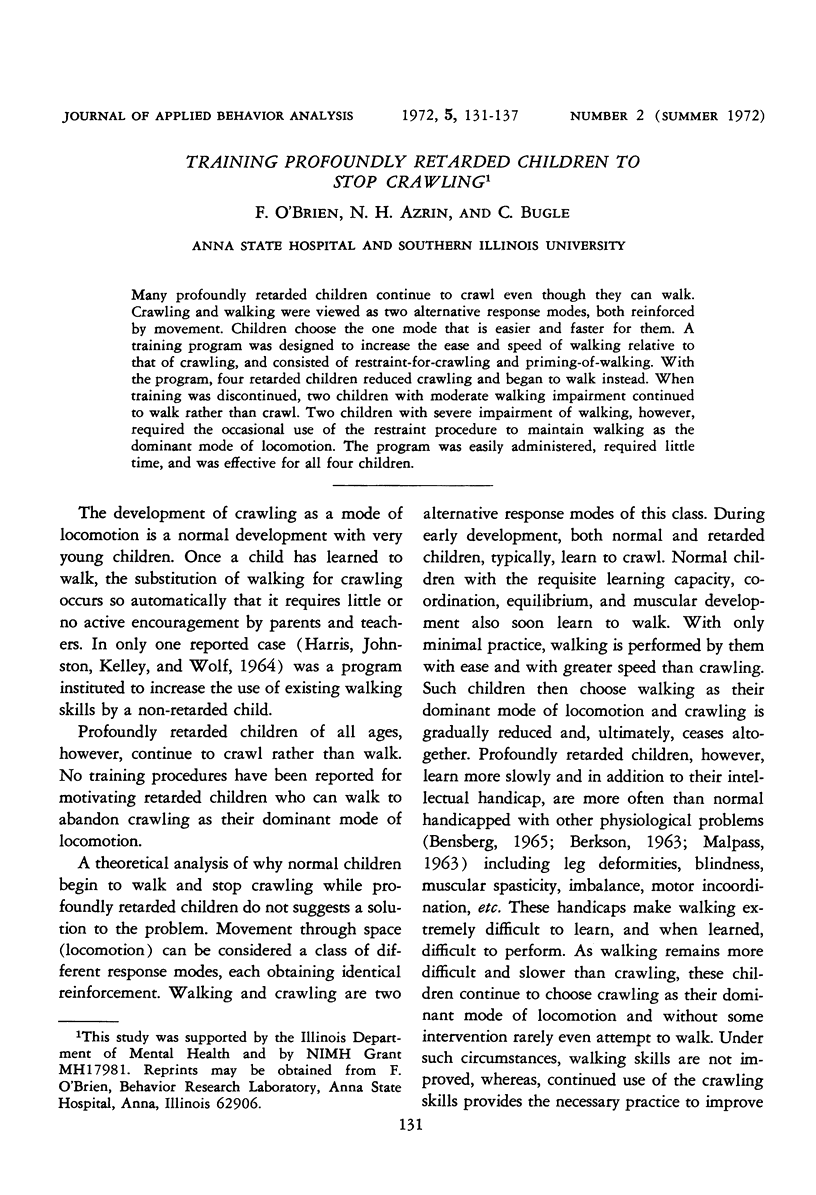
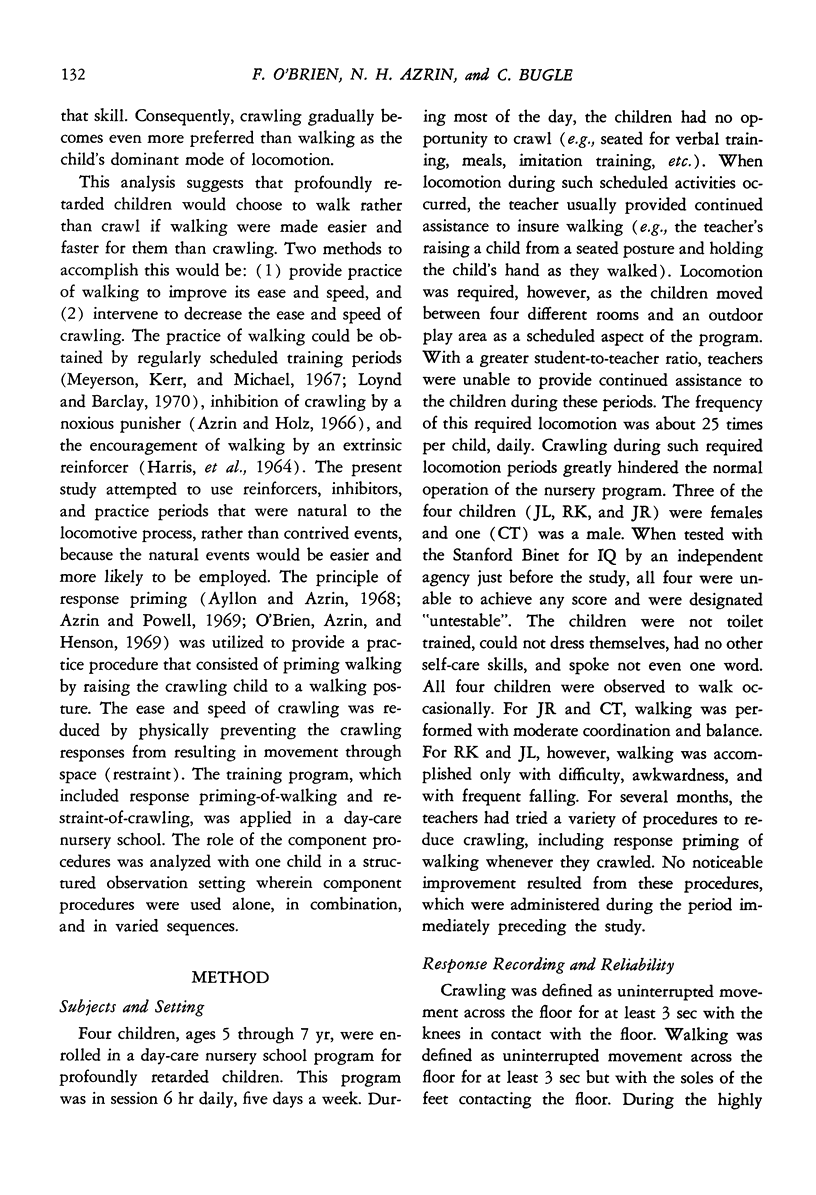
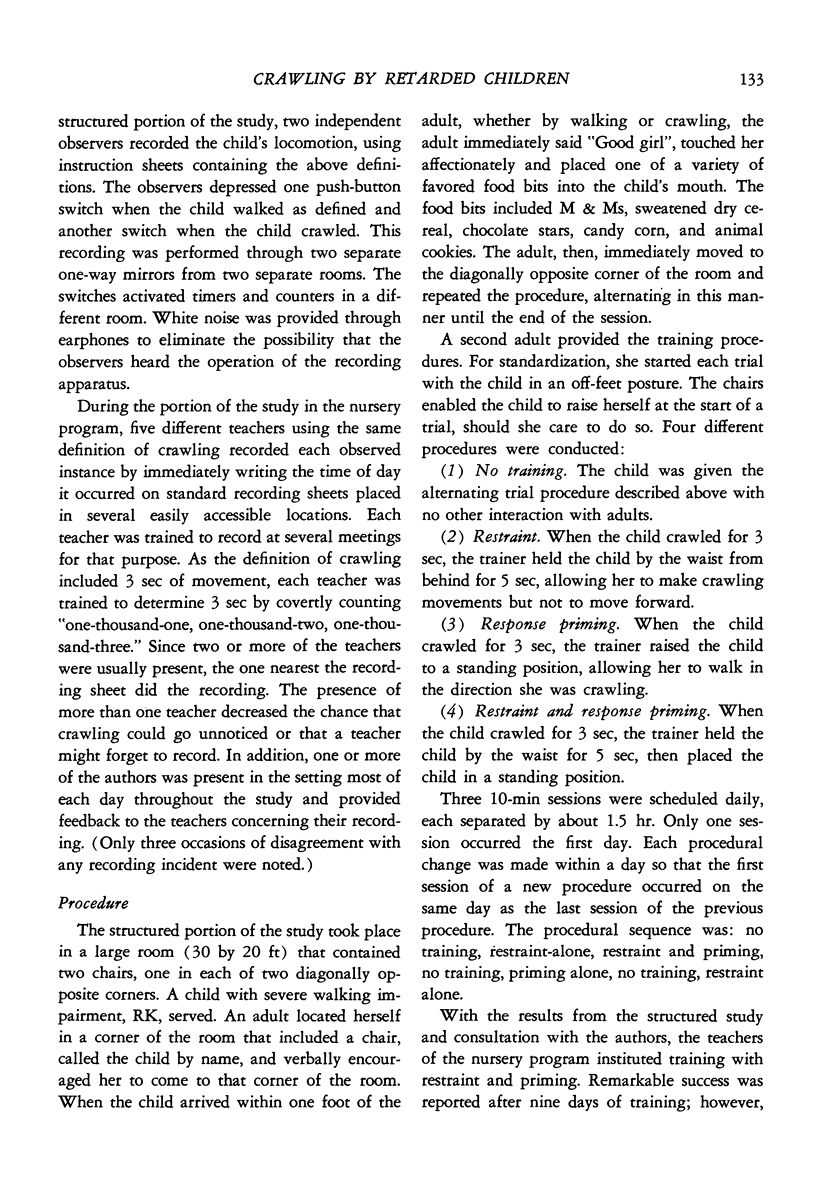
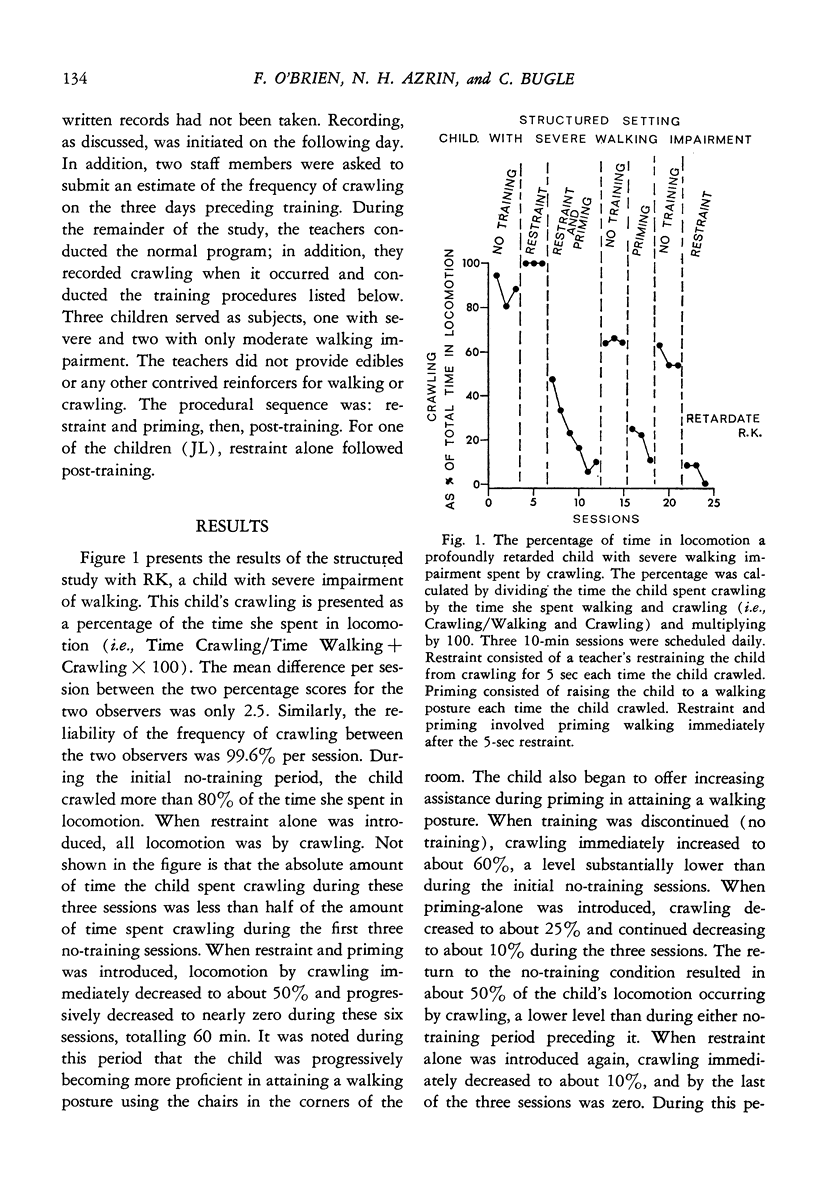
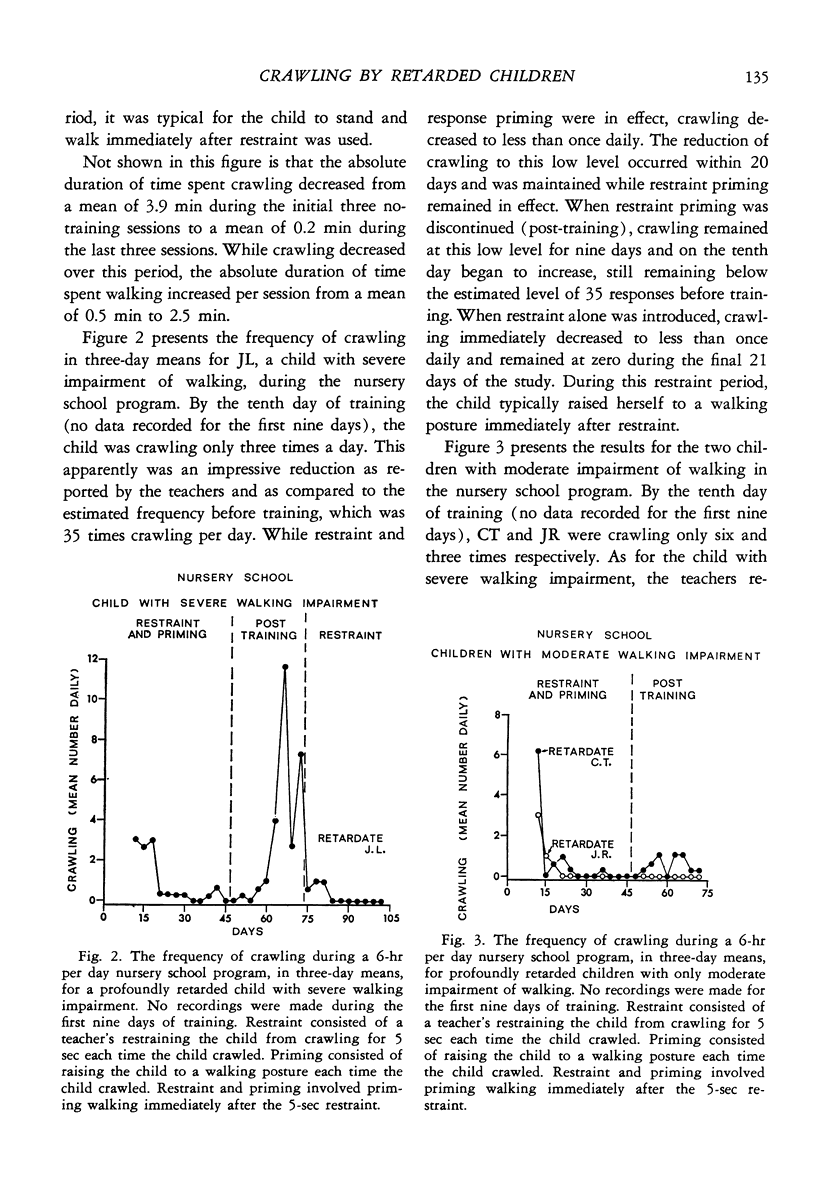

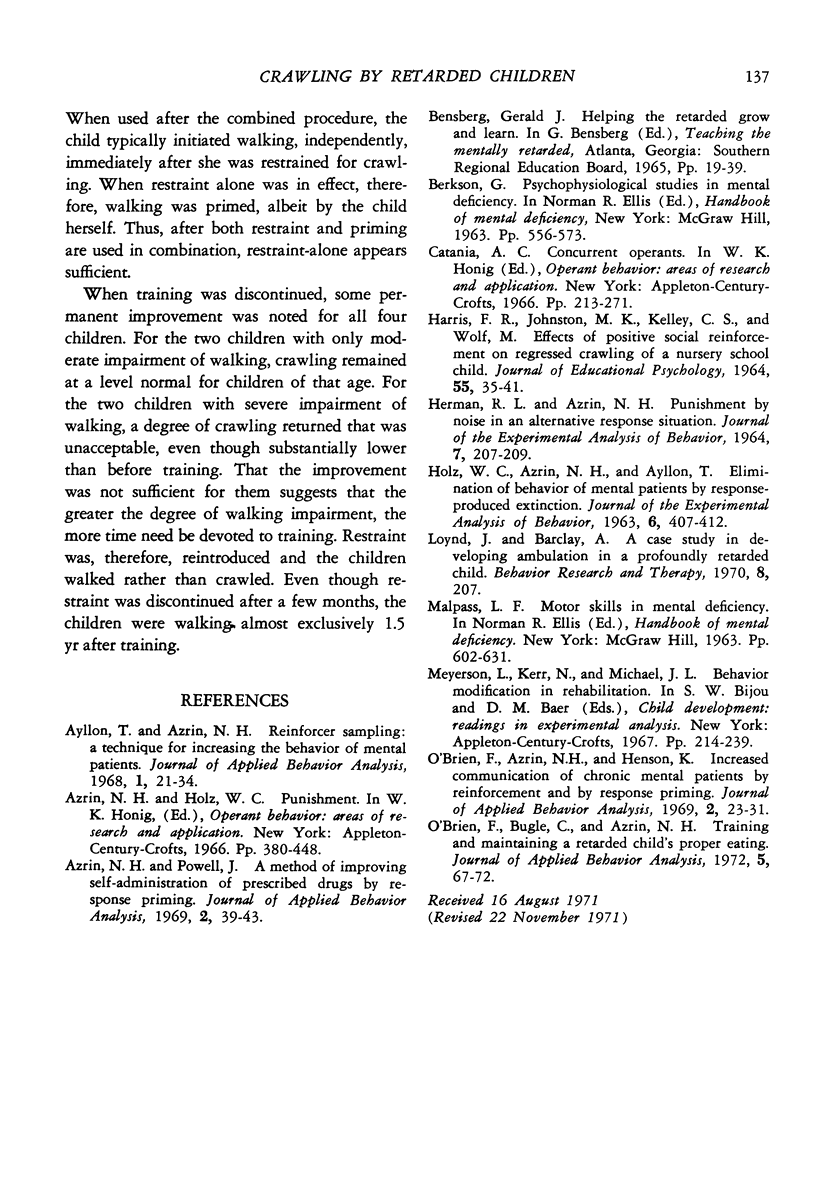
Selected References
These references are in PubMed. This may not be the complete list of references from this article.
- Azrin N. H., Powell J. Behavioral engineering: the use of response priming to improve prescribed self-medication. J Appl Behav Anal. 1969 Spring;2(1):39–42. doi: 10.1901/jaba.1969.2-39. [DOI] [PMC free article] [PubMed] [Google Scholar]
- HENDRY D. P., VAN-TOLLER C. PERFORMANCE ON A FIXED-RATIO SCHEDULE WITH CORRELATED AMOUNT OF REWARD. J Exp Anal Behav. 1964 Mar;7:207–209. doi: 10.1901/jeab.1964.7-207. [DOI] [PMC free article] [PubMed] [Google Scholar]
- HOLZ W. C., AZRIN N. H., AYLLON T. Elimination of behavior of mental patients by response-produced extinction. J Exp Anal Behav. 1963 Jul;6:407–412. doi: 10.1901/jeab.1963.6-407. [DOI] [PMC free article] [PubMed] [Google Scholar]
- Loynd J., Barclay A. A case study in developing ambulation in a profoundly retarded child. Behav Res Ther. 1970 May;8(2):207–207. doi: 10.1016/0005-7967(70)90092-6. [DOI] [PubMed] [Google Scholar]
- O'brien F., Azrin N. H., Henson K. Increased communications of chronic mental patients by reinforcement and by response priming. J Appl Behav Anal. 1969 Spring;2(1):23–29. doi: 10.1901/jaba.1969.2-23. [DOI] [PMC free article] [PubMed] [Google Scholar]
- O'brien F., Bugle C., Azrin N. H. Training and maintaining a retarded child's proper eating. J Appl Behav Anal. 1972 Spring;5(1):67–72. doi: 10.1901/jaba.1972.5-67. [DOI] [PMC free article] [PubMed] [Google Scholar]
- Risley T. R. The effects and side effects of punishing the autistic behaviors of a deviant child. J Appl Behav Anal. 1968 Spring;1(1):21–34. doi: 10.1901/jaba.1968.1-21. [DOI] [PMC free article] [PubMed] [Google Scholar]


